#sphagnum moss
Text
ROUND 2: SPHAGNUM MOSS (forest) VS QUARK (deep space nine)


#tournament#now kill#f2#quark#star trek#deep space 9#deep space nine#ds9#sexy quark#ds9 quark#moss#sphagnum moss#moss fandom
2K notes
·
View notes
Text

Sphagnum moss (Sphagnum sp.) in Chattahoochee National Forest, GA, USA
by Alan Cressler
63 notes
·
View notes
Text

Chrome sphagnum
#moss#sphagnum moss#forest#nature#beauty#photographers on tumblr#artists on tumblr#original photographers#original photography#photography#aesthetic#Washington#pnw#westcoastbestcoast#art#vsco#pacific northwest#explore#travel#cottagecore#naturecore#grandmacore#p
73 notes
·
View notes
Text
#good news#environmentalism#science#environment#nature#clean water#water quality#moss#sphagnum moss#biodiversity
19 notes
·
View notes
Text
R1M22


@character-of-all-time - link to poll
@4thwallbreakersshowdown - link to poll
#unlikely adversaries polls#unlikely adversaries poll#jerma985#jerma#moss#sphagnum moss#gwendolyn poole#gwenpool#hamlet#shakespeare#man there r a lot of hamlets (and shakespeare characters) in this tournament
58 notes
·
View notes
Text
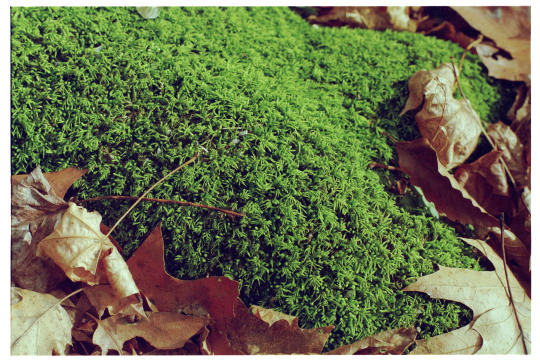
sphagnum - pentax spotmatic & 400 speed color film - developed at eliz digital & scanned with minolta dimage dual iii
#35mm#sphagnum moss#plants#green#moss#botany#january#winter#35mm color film#film photography#35mm photography#35mm color photography#35mm film#35mm camera#nature#nature photography#macro photography#film grain#pentax
15 notes
·
View notes
Text

sphagnum moss
#moss#sphagnum moss#forest#spruce#environment#nature#photography#north#trees#naturist#wetlands#wetland#wetland ecology#sphagnum#conservation#birch#birch trees#camping#outdoors
113 notes
·
View notes
Text

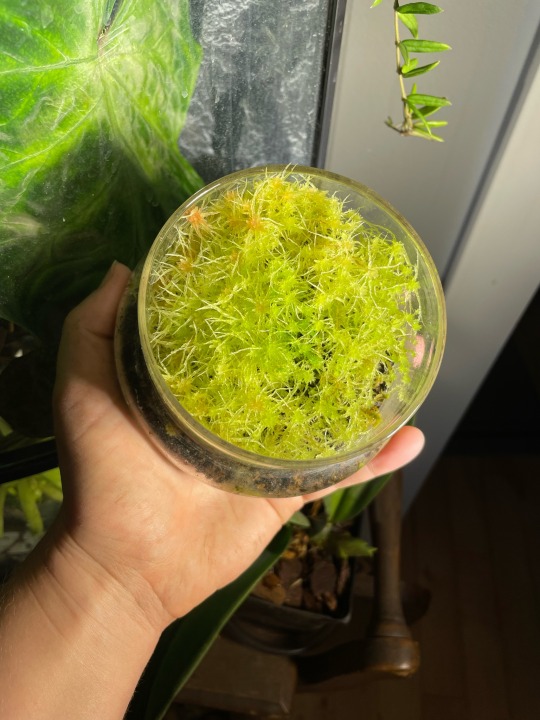
Sphagnum moss grows pretty slowly - enough so that you’re not going to be able to grow enough to use it as a substrate very often. It is really nice to watch it, though. Pics are from March 24th - June 19th.
48 notes
·
View notes
Text


the overhead view of this one hits different😍
#personal#mine#terrarium#closed terrarium#plants used:#cushion moss#sphagnum moss#haircap moss#tamarisk moss#christmas moss#glittering wood moss#fittonia#callisia repens ‘pink panther’#jewel orchid#plantblr#2023
19 notes
·
View notes
Text

Polytricum Moss (Polytrichum spp.) growing through a bed of red Sphagnum Moss (Sphagnum spp.) in blanket bog
Photo by Alex Hyde
#polytricum moss#polytrichum#moss#sphagnum#sphagnum moss#bog#bog moss#red#red moss#red plants#plants#botanical#plant photography#nature
7 notes
·
View notes
Photo
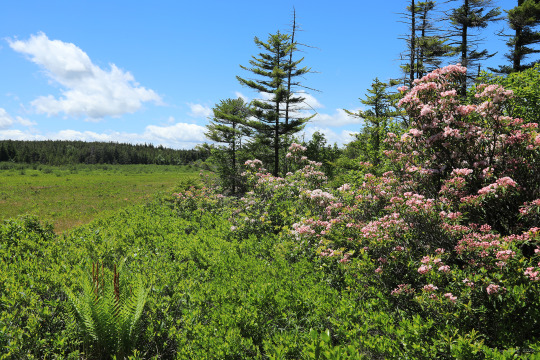
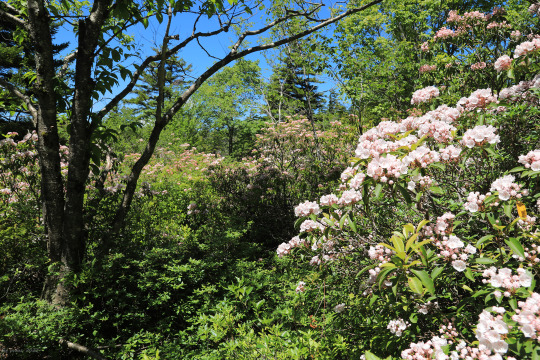
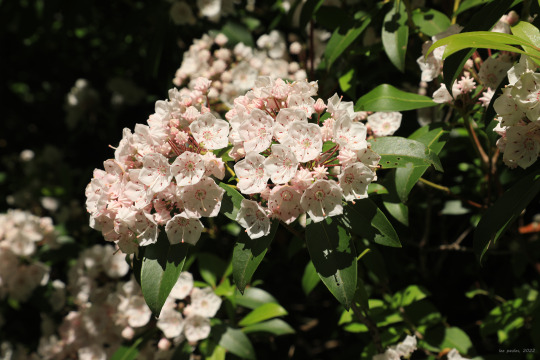
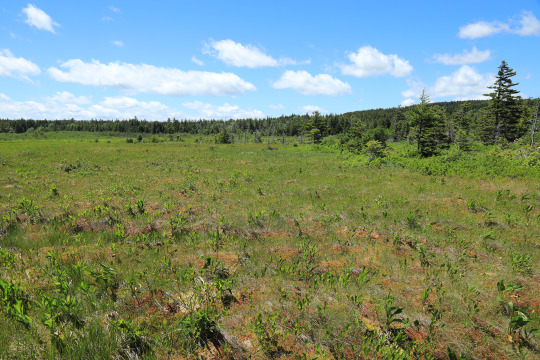
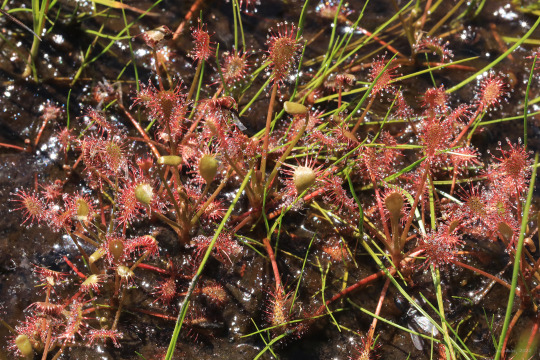
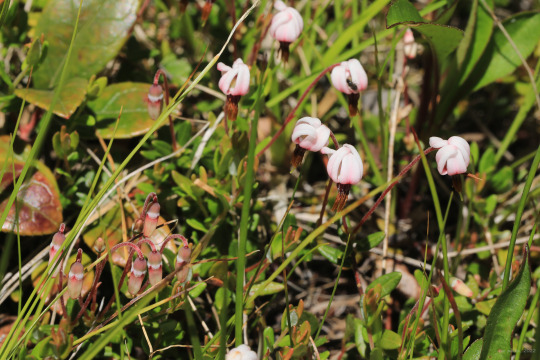


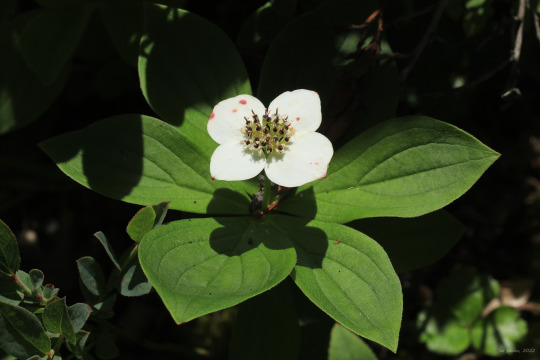
Dolly Sods and the adjacent Flat Rock and Roaring Plains sprawl across a rugged plateau at the edge of the Allegheny Front, which drains much of the moisture from passing clouds. The water drains poorly on the plateau, resulting in sphagnum bogs that host a variety of plants and animals uniquely adapted to the cool, acidic environment.
From top: Mountain laurel (Kalmia latifolia), which in combination with blueberry, huckleberry and minniebush forms impenetrable thickets along the edges of the bogs; spoonleaf sundew (Drosera intermedia), also known as spatulate-leaved sundew, one of two species of carnivorous sundew to grow here; small cranberry (Vaccinium oxycoccos), also known as bog cranberry, whose tiny flowers have strongly recurved petals; possumhaw viburnum (Viburnum nudum), also known as wild raisin due to its vibrantly-hued fruits in the fall; canaan fir (Abies balsamea var. phanerolepis), a recognized subspecies of balsam fir known from only a few locations in West Virginia and Virginia; and bunchberry (Cornus canadensis), which grows prolifically in the dappled sunlight along trail edges.
#appalachia#vandalia#west virginia#allegheny mountains#allegheny front#dolly sods#dolly sods wilderness#flora#wildflowers#wetlands#sphagnum moss#peat bog#sphagnum bog#kalmia latifolia#mountain laurel#drosera intermedia#spoonleaf sundew#spatulate-leaved sundew#vaccinium oxycoccus#small cranberry#bog cranberry#viburnum nudum#possumhaw#wild raisin#smooth witherod#abies balsamea var. phanerolepis#canaan fir#cornus canadensis#bunchberry#monongahela national forest
136 notes
·
View notes
Text
In the highlands of the Peruvian Andes, life is not always easy. Now, the sustainable harvesting of sphagnum moss is providing a source of long-term income and helping women to thrive
Juanjo Moya Ladines is showing me a prototype. It’s a wafer-thin blue strip of mesh, about the same size as a ruler, with a layer of moss inside. He hopes that one day filters like this can be used to bring clean water to communities across the globe.
The plant inside is a type of sphagnum moss. Grown wild in countries across the globe, it’s already used as a natural pool filter, in enclosures for pet frogs, and to clean up oil spills. It was even enlisted to treat wounds in World War I.
At social enterprise Inka Moss, where Moya Ladines works, it’s mainly harvested for horticulture. It’s perfect for “picky plants” like orchids, he says. “The moss is an incredibly amazing product. I personally love it. Which is a really weird thing to say, but I love moss,” he laughs.
The benefits of sphagnum moss aren’t just practical – they’re human. Especially for the women who live in the highlands of Peru.
Read more from Jem Collins!
#peru#inka moss#sphagnum moss#Agriculture#Conservation#Environment#Good Business#Social Enterprise#Society#World#moss#positive.news
27 notes
·
View notes
Text
Scientists from the conservation group Moors for the Future Partnership who conducted a six-year study into sphagnum moss found that planting it in upland areas could dramatically slow the rate at which water runs off the hillsides, preventing river catchments being inundated with water downstream.
The research found that the sphagnum moss reduced peak streamflow – the maximum amount of water that enters a river after a storm – by 65%. The moss was also found to increase lag time – the time taken between rainfall and the rainwater entering the river system – by 680%.
More than 50,000 individual sphagnum plants – which are about the size of a 50p coin – were planted on Kinder Scout, the highest point in the Peak District national park, as part of an “outdoor laboratory” for researchers to observe.
Before the moss was planted on Kinder, the hill surface consisted of bare peat, which meant that after a storm rainwater would wash straight off, leaving communities in downstream valleys more vulnerable to flooding.
The planting of sphagnum moss could therefore bring important ecological benefits. The plant is capable of absorbing up to 20 times its own weight in water, which means that more rainwater can be held upstream and enter a river catchment more gradually to prevent it from being overwhelmed. Sphagnum moss can also help protect the layers of peat underneath it, and can accumulate over time to create new layers of peat which are essential to carbon storage.
Researchers say the benefits of planting sphagnum moss will be amplified over time as the plant grows, and that moss planting has the potential to bring global benefits in terms of the climate, water quality and flood severity.
83 notes
·
View notes
Text

#Drosera rotundifolia#sundew#plantphotography#plantlover#plant flowers#plant photography#plant#plantblr#plantlife#fluffy moss#mossyforest#mossy woods#green moss#sphagnum moss#Sphagnum#bog moss#green energy#beautiful#beautiful photos#my photo#photography#photooftheday#naturecore#photoart#forest#woods#forest view#walking in nature#nature#goblincore
38 notes
·
View notes
Text

I love finding sphagnum mosses:)))
Sphagnum Subg. Acutifolia
#bryology#bryophytes#moss#mosses#petting moss#bryophyte#wulfs peatmoss#peat moss#peat#sphagnum#sphagnum moss#nature#woods#forest
8 notes
·
View notes
Text
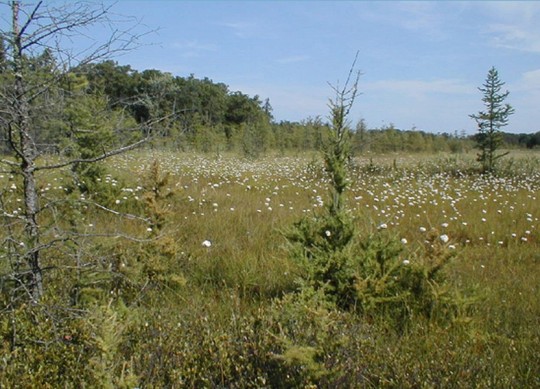
https://www.cedarcreek.umn.edu/habitats/images/sphagtamswamp
#archive#archiving#web archive#nature#sphagnum moss#sphagnum swamp#sphagnum tamarack swamp#swamp#meadow#grass#trees#minnesota#cedar creek
32 notes
·
View notes